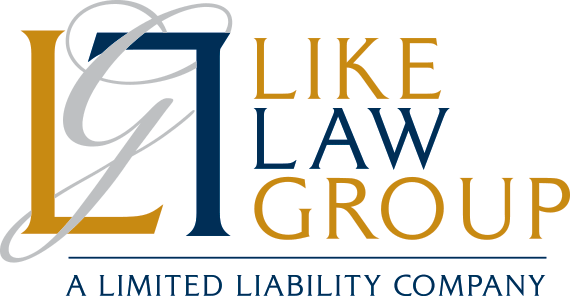Estate planning often feels complex, leading many people to rely on assumptions that can have devastating consequences for their loved ones and their legacy. From who can make decisions for you to whether you need an estate plan, common myths can stand between you and a secure future. Let’s debunk these widespread misconceptions and reveal four essential truths about effective estate planning.
Myth 1: My spouse can make all my healthcare and financial decisions because they are my spouse.
Reality: This is a dangerous misconception that can lead to significant stress and financial hardship for your family. While your spouse has certain rights, they generally do not automatically have the legal authority to make all medical decisions or manage all your financial accounts if you become unable to manage your affairs (i.e., become incapacitated). Without properly executed legal documents, you and your spouse may face obstacles handling the following:
- Medical decisions. Your spouse may be unable to access your medical information, direct your care, or make critical end-of-life decisions without a medical power of attorney (also known as a durable power of attorney for healthcare) and an advance directive (or living will). Without these documents, a court may need to appoint a guardian or conservator in a public, costly, and time-consuming process.
- Financial decisions. Similarly, your spouse could be locked out of accounts in your sole name, unable to pay bills or manage investments without a financial power of attorney. This can prevent timely financial management and even payment of day-to-day expenses. As with medical decisions, a court may need to appoint a guardian or conservator before your spouse can access these important accounts.
Proper planning ensures that your spouse or another trusted individual you choose has the immediate legal authority to act on your behalf and honor your wishes without court involvement.
Myth 2: My family knows my wishes. They will divide everything the way I want it divided.
Reality: While your family may genuinely intend to honor your verbal wishes, discussions about your affairs—without proper legal documentation—carry no legal enforceability. After your death, without a legally binding plan, your estate may be distributed according to your state’s intestacy laws, which may not necessarily be what you intended. This could lead to the following outcomes:
- Unintended beneficiaries. If you rely on the state’s default distribution plan, your money and property could go to distant relatives rather than close friends, stepchildren, or other nonrelated loved ones.
- Family disputes. Even well-meaning family members can disagree on what your true wishes were, leading to bitter conflicts and costly litigation that depletes your hard-earned money and property.
- Loss of control. Without a last will and testament or revocable living trust, you have no say regarding who inherits your money and property and how they receive it, who will raise your minor children, or who will be in charge of winding down your affairs.
A comprehensive estate plan is the only way to legally ensure that your estate is passed on as you intend, protecting your legacy and providing clear guidance for your loved ones.
Myth 3: I signed a will before, so I do not need to do it again.
Reality: Life shifts, laws change, and your goals evolve over time. An outdated estate plan can be just as detrimental as having no plan, so be sure to review your estate plan regularly—ideally, every three to five years. You should also review your estate plan whenever significant life events such as the following occur:
- Family changes. Such changes include marriage, divorce, remarriage (yours and your children’s), birth or adoption of children or grandchildren, and deaths of beneficiaries or trusted decision-makers (for example, agents under a financial or medical power of attorney, executor or personal representative, or guardian of your minor children).
- Financial changes. In addition to seeing significant increases or decreases in the value of what you own, you may have purchased or sold real property or businesses, experienced changes in your retirement accounts, or received an inheritance.
- Location changes. Moving to a different state or country can dramatically impact the validity and effectiveness of your existing estate planning tools, as state and country laws can vary widely.
- Tax law changes. Estate, gift, and income tax laws constantly evolve at federal and state levels, potentially affecting how your money and property will be distributed, how they will be taxed, and how much a beneficiary may ultimately receive.
- Changes in goals. Your philanthropic desires, legacy goals, or wishes for specific personal property, accounts, or real property may shift over time. Your estate plan should reflect that.
A comprehensive review of your estate plan every three to five years or after any major life event is crucial for ensuring that your estate planning tools still reflect your wishes, minimize taxes, avoid probate, and align with current legal requirements.
Myth 4: I am not wealthy enough to need an estate plan.
Reality: This myth is perhaps the most dangerous. Almost everyone, regardless of their net worth, can significantly benefit from thoughtful estate planning. While an estate plan certainly addresses your financial accounts, estate planning encompasses far more than just money.
- Protecting your children. If you have minor children, a will is the primary legal document for nominating a guardian to care for them if something happens to you. Without one, a court will decide who will raise your children—without your input—often through a public and potentially contentious process.
- Caring for pets. You can ensure that your beloved pets are cared for after you have passed away or during a time when you cannot care for them.
- Distributing sentimental items. A personal property memorandum can specify who receives your cherished family heirlooms, artwork, or other nonmonetary items, which can help prevent family squabbles.
- Planning for your incapacity. A comprehensive estate plan allows you to name trusted individuals to manage your finances, make medical decisions, and carry out your wishes without the delays and expenses of court involvement if you become incapacitated. Such protection is valuable regardless of how much money or property you own.
Estate planning is about taking control, ensuring that your wishes are honored, and providing peace of mind for you and your loved ones, no matter what you own. To learn how estate planning can benefit your specific situation, call us to schedule a consultation.











